I hope I won’t make multi-instrumentalist musician Tcha Limberger’s wife too angry with me if I admit: I fell a bit in love with her husband’s voice. Partly because of its soft sound, which is also useful for singing, and partly because he, a non-Hungarian, speaks my native language totally fluently. Incredible vocabulary, strong expressive power, and he can even play with the language, all the different accents and dialects. During our online phone conversation he sometimes says sorry for telling me ‘complicated’ stories, but I could have truly listened to him for a few more hours, too. No matter how long this below interview is, it only captures a small part of Tcha Limberger’s life work: the instruments he is a virtuoso in, the musical worlds he deals with, the languages he has learned along the way. And even this small part made me totally impressed…
I have so many questions, I don’t even know where to start. But maybe here: what makes a musician from Belgium to learn Hungarian almost up to a native speaker’s level?
To make it clear to others why it was the totally logical decision to me, we need to start a bit further back. I come from two distinct cultures: one is Flemish, and the other one is Sinto through my ancestry on my father’s side. The Sinti are Western European Romani people who have been listening to Hungarian and other Eastern European music for over a century now. Elderly Sinti are convinced that the true ‘gypsy music’ is related to Hungary. Many people built up a career on playing in the style of Hungarian Romani bands of the 50s. Mirando, a Romani group from the Netherlands, has played for the Queen of the Netherlands herself for about twenty years, or there was Schnuckenack Reinhardt, a Polish-born Sinto, or Titi Winterstein, both of whom lived and played in Germany.
My family members rather played django style, but then a colleague of my father’s became immersed in this Hungarian world of music, to the extent that he searched for Brussels-based Hungarian Romani musicians and learned a bit of viola music from them. He observed that these Hungarian bands sound better, because the Sinti bands don’t have viola, nor cimbalom, nor cello. I must have been thirteen when he showed me some albums, like from clarinet artist Ernő Kállai or Gyula ‘Toki’ Horváth who is my absolute favourite violinist of all times. Unfortunately I couldn’t ever meet him because he died in the 1970s. But he must have touched something in me very deeply, because at the age of seventeen I decided to play the violin. This was a very late decision, I wasn’t even quite sure about whether there’s any point in it.
Unfortunately there are not so many Sinto violinists left, because influential musicians like Stochelo Rosenberg or Biréli Lagréne inspire young people to play the guitar. But then I found some recordings in the family archives which proved that my grandfather used to play the violin, too: this made this instrument even more precious to me. When I was nineteen, I had my first visit to Budapest, with my father and his above-mentioned fellow musician. Those evenings when we weren’t playing our own Sinto songs, we went to listen to, for instance, famous leading violinist Lajos Boross in a reputable restaurant. I ultimately made the decision: I do not only want to play the violin in general, but I want to play this particular violin music. It is something that has a connection to the Sinti anyway, they like it, but they cannot make this music the right way. Then my dear friend in Brussels, Zsolt Kállai, told me directly: you will never be able to play this music unless you speak Hungarian. All right then, I said, then I’m going to learn Hungarian.
Just like that…? And how did the learning process go?
I received a very good textbook as a present, which I got to be translated into Braille right away, and started to study alone. I could reach up to Lesson 11 this way, but already had a lot of questions. Although I spent a lot of time with Zsolt Kállai and his crew, I quickly realised that just because someone is a native speaker, they might not be able to explain grammar to me. So I rather looked for a professional Hungarian teacher with whose support I got through the book. When I became twenty-two, I returned to Hungary with decent language skills. I quickly found a violin teacher, Miki Lakatos.
That was when I decided to spend at least half a year in Hungary, which is not much but still a good start. There was a bit of trouble, because Miki Lakatos stopped having enough time for teaching, so I had two choices: either to find someone else in a few weeks, or to go home. To my luck, I was also interested in another instrument, the tárogató, and someone recommended that I contact Béla Horváth who was selling a precious tárogató of the brand Stowasser. I visited him, he asked me about why I can speak Hungarian, and I explained everything to him: that I want to learn to play this certain type of Hungarian-Romani music, called the Hungarian ‘nóta’, but I don’t have a violin teacher at the moment. He then put on a recording of someone playing the violin in a breathtaking way, and it turned out that it was his son, fifteen during the time of the recording. I could hardly believe this was possible, but then the boy came home from school, still not older than seventeen, took his violin and played even better than on the old recording. He became my violin teacher.
But this story still wasn’t over. More and more people, especially the non-Romani Hungarians, kept asking me why I am so interested in the Hungarian ‘nóta’, what I see in it. Well, I see that it is very good, I replied. However, I slowly realised that those who prefer Hungarian folk music treat the Hungarian ‘nóta’ as something inferior: some kitschy music with the mere goal of entertaining tourists. Okay then, I said, and listened to some authentic folk music, but to be honest, I didn’t like everything. From what I indeed like, I chose the music of the Transylvanian region Kalotaszeg, and decided to go there as well. It was even easier to go for it after having experienced the difficulties of finding my way as a foreigner into the rather closed community of Hungarian Romani musicians.
What happened in Kalotaszeg?
That was a truly special experience. We attended a folk dance camp in the village Kalotaszentkirály. On our first evening we were walking back to our accommodation, and there they were all, sitting in front of the local pub. Sándor ‘Neti’ Fodor, Gyula Czilika, Rudolf Toni Sr., Rudolf Toni Jr., István ‘Kiscsipás’ Varga, the authentic sources of local folk music in the flesh. While I was walking past them, ‘Neti’ loudly commented: “Look, guys, a Roma čhavo!”. I went to them, talked to them a bit in Hungarian, a bit in Romani, and then he told me: “Now let’s get your violin out!” And we were then making music until 5 in the morning.
I’m a bit of an odd one, looking at this Hungarian ‘nóta’ versus Hungarian folk music question from a rather further angle. Indeed, no matter how well I speak Hungarian, I’m still a foreigner who wasn’t socialised in any of the local musical traditions. I continue to love both the Hungarian ‘nóta’ and the Kalotaszeg folk music, and I don’t feel guilty about it. Yes, they are very different, but they both have their special values. It is also true that the Hungarian ‘nóta’ changed a lot in the last few decades, as most of the musicians of earlier times are dead now, and let’s be brutally honest: some giants of this genre were so grand that it’s impossible to grow up to their level.
Interestingly, Hungarian ‘nóta’ seems to have always had this mystical golden age, as a popular author, Gyula Krúdy, already wrote in the early 20th century how this music lost a lot of its magic. We won’t ever be able to know what he meant by it, because there are no recordings left from the 19th century. Nevertheless, those musicians from the 20s and 30s whom Krúdy might have labelled ‘not so magical anymore’ were still the ones whom we from today think back to with a huge respect. Lajos Boross had a story about a lot of Hungarian Romani musicians gathering in a Munich restaurant. First, it was Sándor Járóka Sr. and his band who made music, in a quite good way. Then it was Lajos Boross and his band, also in a quite good way. And then Toki started to play, and that made the rest, as old Boross used to recall, feel like little children who know nothing.
While I was preparing to come to Hungary, my friend Zsolt Kállai warned me that if I’m looking for the old Hungarian ‘nóta’ played by Boross, Toki, or Járóka Sr., I will be disappointed, as it is not the same anymore. I don’t say I’m actually disappointed, but I see the current situation more clearly. It is sad to see how few musicians are truly interested in the Hungarian ‘nóta’, and even if some bands and singers try to play it, they often fail to create that special atmosphere. Where have people like old Lajos Boross or Sándor Járóka Sr. gone? There are some restaurant bands that only consist of three people because there is no third violinist. Or a violist. Or a clarinet player. Or a cellist. The best cellist is unfortunately dead now. His name was Károly Szegfű and was one of those old living legends whom I definitely wanted to meet. It was a huge honour that when we started the Budapest Gypsy Orchestra, he immediately joined us. His last tour was with us in England, but he was so ill already that needed to skip the last two concerts. The doctors didn’t want to let him travel home, but he definitely longed to return to Hungary. That was the last time I saw him, in two weeks he was dead.
Do I understand correctly that you have a kind of a mission statement to bring back the old Hungarian ‘nóta’?
Let’s put it this way: I would like the old Hungarian ‘nóta’ to return. But whether I’m the right person to bring it back – I’m not sure about that. Those previous generations of Romani musicians in Hungary had a huge repertoire and routine, having played every night since their teenage years. And me? I sometimes play this genre, but also Greek, Romanian, Bulgarian music, not to mention that I write my own Sinto songs, and although I love Hungarian music to bits, it’s not my exclusive expertise. Also, even if I want to play Hungarian ‘nóta’, many questions come up: for whom shall I play, with whom shall I play? The last time we performed with the Hungarian orchestra was four years ago, and there was a concert in France last year where we had a repertoire of Hungarian ‘nóta’. My wife Liana jumped in to be the third violinist. She is not Hungarian either, but has a talented ear and can swiftly learn any kind of music.
Speaking of all things international: what happened before your commitment to Hungarian music and the violin?
When I was little, I wanted to be a Flamenco singer. My father brought albums from France with local gitano music. Actually, the same colleague of his who subsequently brought me to the Hungarian music warned me at that time that this is not the ‘real’ flamenco but its special South French Romani version, and for the ‘real’ flamenco I need to do this and that. So at the age of six I started to play the guitar under his supervision, and then there was a period in my life when I collected African, Asian and South American instruments. When I was twelve, I joined amateur New Orleans and Dixieland bands with my banjo, and that’s how I eventually got to the clarinet, too, which became my main instrument for a long time.
Indeed, when I first arrived at Budapest, I didn’t only find Béla Horváth the violin teacher, but originally I had a clarinet teacher as well, Csaba Lukács, who is one of the best Hungarian clarinet players. But even after the first lesson I felt that all the time I spend with the clarinet is lost, as I want to spend all my time with the violin. It was a very reckless decision, I felt like someone standing on a cliff, dizzily: shall I jump, shall I not jump? That was the time when I had the prospect of becoming a really good clarinet player, whereas the violin was new to me, and nobody knew what would come out of it. Nevertheless, I decided for the violin.
How do you feel about giving a concert in Hungary soon?
Very well! Although I live in the Basque Country now, I have never really left Hungarians behind: I am in a constant connection to my colleagues in Hungary and Transylvania. This way I can keep the language skills fresh. My two elder children also live in Hungary, but I talk in Flemish with them, because that’s what they need to practice. It will be great to eat some good somlói dumplings or a fish soup, see my old acquaintances, sit in restaurants, listen to colleagues when I’m not making music myself. The concert will be an interesting experiment: one pillar of it will be me and my friends from Kalotaszeg, also some of whom I once met in front of the Kalotaszentkirály pub. The other pillar will be Lajos Sárközi Jr. who is a representative of the urban version of Hungarian Roma music and the ‘nóta’, and with whom I have never played together. The folk musicians of Kalotaszeg are not among those who dislike the Hungarian ‘nóta’ anyway, because they generally cherish Hungarian things, and they appreciate if someone plays well, be it anything. That’s also why I hope that the mixture of the two styles will work well on stage.


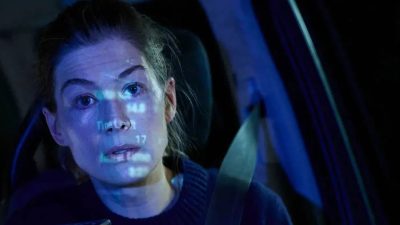

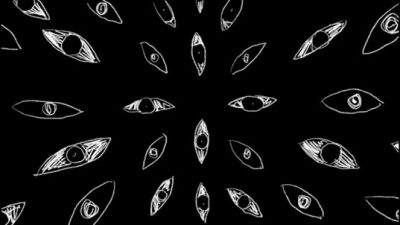


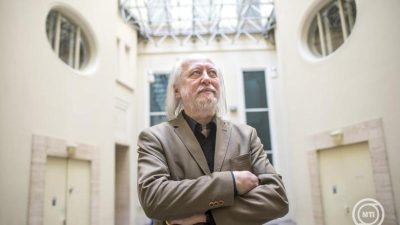





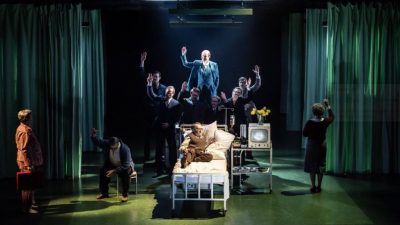
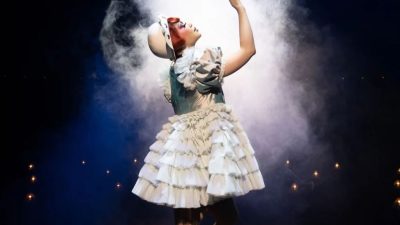
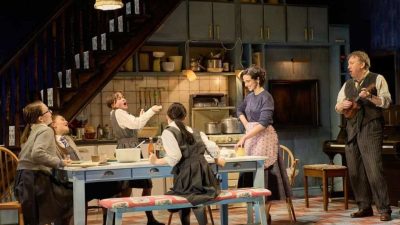






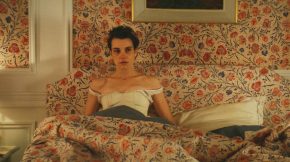


Comments